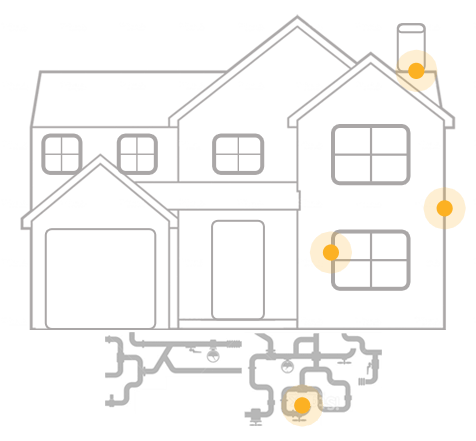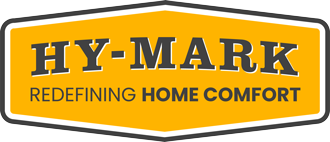
Frequently Asked Questions
- Check that your thermostat is set on “Heat.”
- Check that your furnace is On. In most cases, the On/Off switch is located on the wall near the ceiling in the furnace room.
- Check that your electrical breaker is On and has not been flipped.
- Check that your furnace filter is clean. If it is dirty, try replacing it with a clean filter, and restart the furnace to see if that resolves the problem. If your furnace has shut off due to a dirty filter, you likely are due for a furnace maintenance.
- Check outdoor venting to make sure no openings are blocked with snow, insect nests, or blown debris.
If your system is under warranty, and you are still having problems please call our office to schedule a service visit.
- Check that your thermostat is set on “Cool.”
- Check that your furnace is On. In most cases, the On/Off switch is located on the wall near the ceiling in the furnace room.
- Check that your electrical breaker is On for both the air conditioner system and the furnace system.
- Check that your furnace filter is clean. If it is dirty, try replacing it with a clean filter, and restart the furnace to see if that resolves the problem. Due to the difference in how cool air versus warm air travels, it may be necessary to switch from a thicker filter (5 inch) to a thin one (1 inch) during the cooling season.
- If you use a cover on your air conditioner (outdoor condenser), make sure it has been removed.
- Ensure there is free air space for at least a foot in all directions around the air conditioner (outdoor condenser). If your system is under warranty, and you are still having problems please call our office to schedule a service visit.
A newly constructed home contains a lot of moisture within its building materials such as concrete, lumber, drywall, flooring, and more. A new home can take 12 to 18 months to “dry out” inside completely. Homes are also built much more tightly these days, causing them to hold in moisture. A Heat Recovery Ventilator (HRV) or Energy Recovery Ventilator (ERV) system will remove humidity and moisture from a home, preventing mold and air quality problems.Another common cause of indoor humidity is that the outside temperature changed a large amount in a short amount of time. This requires a realignment of humidity within the house to outside conditions.
During the cold winter months, make sure your HRV/ERV is set to run intermittently (it should not be running constantly). Do not run your HRV/ERV in the summer, as it will ventilate out your air-conditioned, low humidity air and make your air conditioner work harder.
You will also want to adjust your humidistat (if you have one) to around 15-25% humidity in winter. In summer you can raise it to around 40%.
An inexpensive 1-inch disposable filter should be changed every 2-4 months throughout the year for the average household.In a home with many occupants and pets, or where there is a lot of construction in the area, it is recommended that the filter is changed close to every 2 months. In homes where these things are not present, they may be changed every 4 months. If you would like to change your air filter less frequently and desire better air filtration, Hy-Mark sells filters that can last up to 1 year.
First: For safety reasons turn OFF your furnace before opening the filter cabinet. Ninety-nine percent of the time the air filter cabinet is on the left or right side of the furnace in a vertical position. To gain access, remove the front panel from the cabinet, which will be between 1 inch and 5 inches wide. This small front panel will not be screwed in; it will likely have some tabs to grip to pull it out.To see if your filter is dirty, hold it up to the light and see if how much shines through. It is a good idea to always have a replacement filter on hand so you can compare the two. If the filter looks dirty and is at or near the prescribed length of time it is supposed to last, it is time to change it (see How often should I change the air filter in my furnace?)
Room temperature is largely dependent upon airflow. In the heating season, rooms that have restricted airflow are often cooler than other rooms. In order to achieve a consistent temperature throughout your home, airflow must be restricted to all the warmest rooms at the register, thereby increasing air to the coolest rooms. Of course, this would work in reverse for the cooling season. This is referred to as “balancing a ventilation system”.Our licensed HVAC technicians have specialized meters to measure airflow and temperature from different places in ventilation systems. If your system is covered under warranty and you are still having problems, contact us to schedule an air balance of your home’s ventilation system.
The model/serial information on a furnace is located on the inside of the front panel. If there are two panels, it will be behind the lower one. You may require a screwdriver to remove the panel.The model/serial information on an air conditioner condenser (outdoor unit) is found on the backside of the unit. There is no panel that needs to be removed. The secondary part of the air conditioning system is the coil, but this will likely be sealed into your ductwork and inaccessible.
To find out the start-up date of your heating/cooling equipment, check the gas tag on your gas line near the furnace. If no closing date is known, we will use this date to determine the beginning of your warranty period.
Air conditioning systems are designed for our Canadian climate. You can imagine how different it may be if you lived in a tropical area. The system is sized to both cool your home and remove humidity at the same time in moderate warm summer conditions. When we have consistent 30 degree Celsius or higher days in a row, our air conditioners work very hard to keep up. Here are some air conditioning tips for your home:
- Keep blinds, window coverings closed during the day.
- Basements are always cool, so close the registers downstairs in the summer season.
- Make sure your furnace filter is clean.
- Have the furnace fan set to on for constant air circulation throughout your home.
- Avoid having exterior doors open and close often.
Read your full credit disclosure /general warranty/buyer’s right to cancel terms and conditions here.
